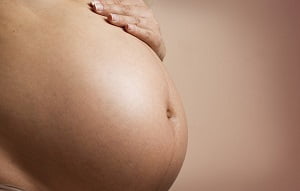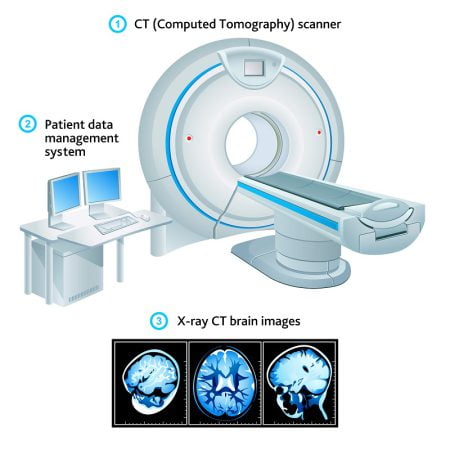The pelvic inflammatory disease (PID) develops when bacteria move up from the vagina to the higher reproductive organs like the uterus, fallopian tubes, and ovaries.
Most of the cases of PID are developed as a result of sexually transmitted diseases (STDs) like chlamydia and gonorrhea which are caused due to bacteria like Neisseria gonorrhoea and Chlamydia genitalis. But it’s now known that other microbes like Mycoplasma genitalium can also be responsible for more cases.
How Does PID Cause Infertility?
According to Centers for Disease Control and Prevention, 1 in 8 women with pelvic inflammatory disease will experience difficulties in getting pregnant.
PID can be treated to prevent fertility issues in women.
PID can lead to infertility because of the bacterial infection that damages the fallopian tubes and obstructs eggs as they attempt to travel through the fallopian tubes for fertilization. If a woman has untreated PID for a longer time, it is likely that she will experience fertility complications.
- If PID is left untreated, it can cause permanent damage. Scar tissues as a result of PID infection in the fallopian tubes can cause blockage and inability to get pregnant.
- If an egg however manages to get into the fallopian tubes and is fertilized by a sperm, the chances for having an ectopic pregnancy (a dangerous pregnancy that occurs when the embryo attaches and begins growing outside the uterus) increases dramatically. Ectopic pregnancy however cannot lead to infertility directly, but it can affect the health of fallopian tubes and this can impact fertility as well.
- Another cause of PID-related infertility is hydrosalpinx, in which the fallopian tubes dilate and get filled with fluid. This can also cause blockage and prevents fertilization.
Fertility Risks Due to Pelvic Inflammatory Disease
Fertility risks that may arise due to PID include such as:
- One episode of PID increases the risk of infertility double times.
- More than three episodes of PID increase the risk of fallopian tube blockage up to 75 per cent.
What is the Treatment of PID Infertility?
There are several treatments of PID which can reduce the risk of infertility, which include:
- Antibiotic therapy can be given to treat pelvic inflammatory disease, and can prevent further damage to the reproductive organs. The antibiotics for PID treatment include doxycycline, cefotetan, clindamycin and gentamicin. These antibiotics cannot repair the damage that has already been caused to the reproductive organs due to the infection.
- The main cause of PID-related infertility is blocked fallopian tubes. If one tube has been blocked, and the other is clear, depending on other fertility factors, you can conceive on your own. If both the fallopian tubes are blocked, your treatment options may include surgical correction of the blockage or in vitro fertilization (IVF) treatment.
- Scary blockage typically occurs at the distal end in pelvic inflammatory disease, which means it’s blocked by the ovary and the blockage is more difficult to treat surgically than blockage by the uterus. But in some of the PID cases, about 25% of the time, surgery may allow you to conceive naturally, assuming that there are no more causes for infertility.
- Hydrosalpinx may prevent optimal IVF success. In these cases, doctors usually remove the affected fallopian tube completely to increase the chances of fertility.
- If you have thick adhesions between the tubes and ovary along with tubal blockages, your potential for successful pregnancy after surgical repair is low. IVF is the best option for treatment in these types of PID complicated cases.
What Should You Know Before Getting Treatment of PID for Infertility?
There are certain things that a patient should discuss before going through the treatment. These include:
- When you are deciding between surgical treatment or IVF treatment, you should ensure to take into account other fertility factors, like your age, your partner’s fertility, and any other complicating issues. Sometimes, IVF treatment is a better choice than going for a surgical repair. Discuss with your doctor about your options.
- If you’re suffering with chronic pelvic pain, it may be good to have the surgery to remove any adhesions and possibly correct blockages, even if the chances for natural pregnancy are not very high.
- If you conceive naturally, after having a surgical repair, or with IVF, your risk of ectopic pregnancy is still higher. It’s very important to be aware of the signs and symptoms of an ectopic pregnancy. Your doctor should regularly monitor you closely after conception occurs.
FAQs
How Long Does it Take for PID to Cause Infertility?
Usually after three episodes of PID, the infertility rate reaches upto 50%. PID may also increase the risk of an ectopic pregnancy, in which the fertilized egg gets trapped in the tube and begins to grow there which prevents implantation of the fertilized egg in the uterus. Even after one episode of ectopoic pregnancy, there are less chances for a woman to become pregnant again.
Can a Woman With one Fallopian Tube Conceive?
Yes, a woman with one fallopian tube can conceive. You may have only one fallopian tube if you've had pelvic surgery for pelvic inflammatory infection, a tumor or a past ectopic pregnancy. You can get pregnant with only one tube if you have at least one functioning ovary and your menstruation cycle is normal.
Can Infertility Caused by PID be Reversed?
Yes, infertility caused due to PID can be treated. Initially, PID is treated with antibiotics therapy. However, antibiotics treatment of PID cannot reverse the scarring caused by the infection. It can be treated surgically. In some cases of infertility, IVF is also recommended.
Can Abortions Cause PID?
PID can occur after a miscarriage, abortion, or any other procedure that opens the cervix or abdomen, which allows disease-causing bacteria an easier entry to the reproductive organs. The main symptoms of PID involve extreme pelvic pain or lower abdomen pain, vaginal discharge with foul smell, painful urination, abnormal bleeding and pain during intercourse.





